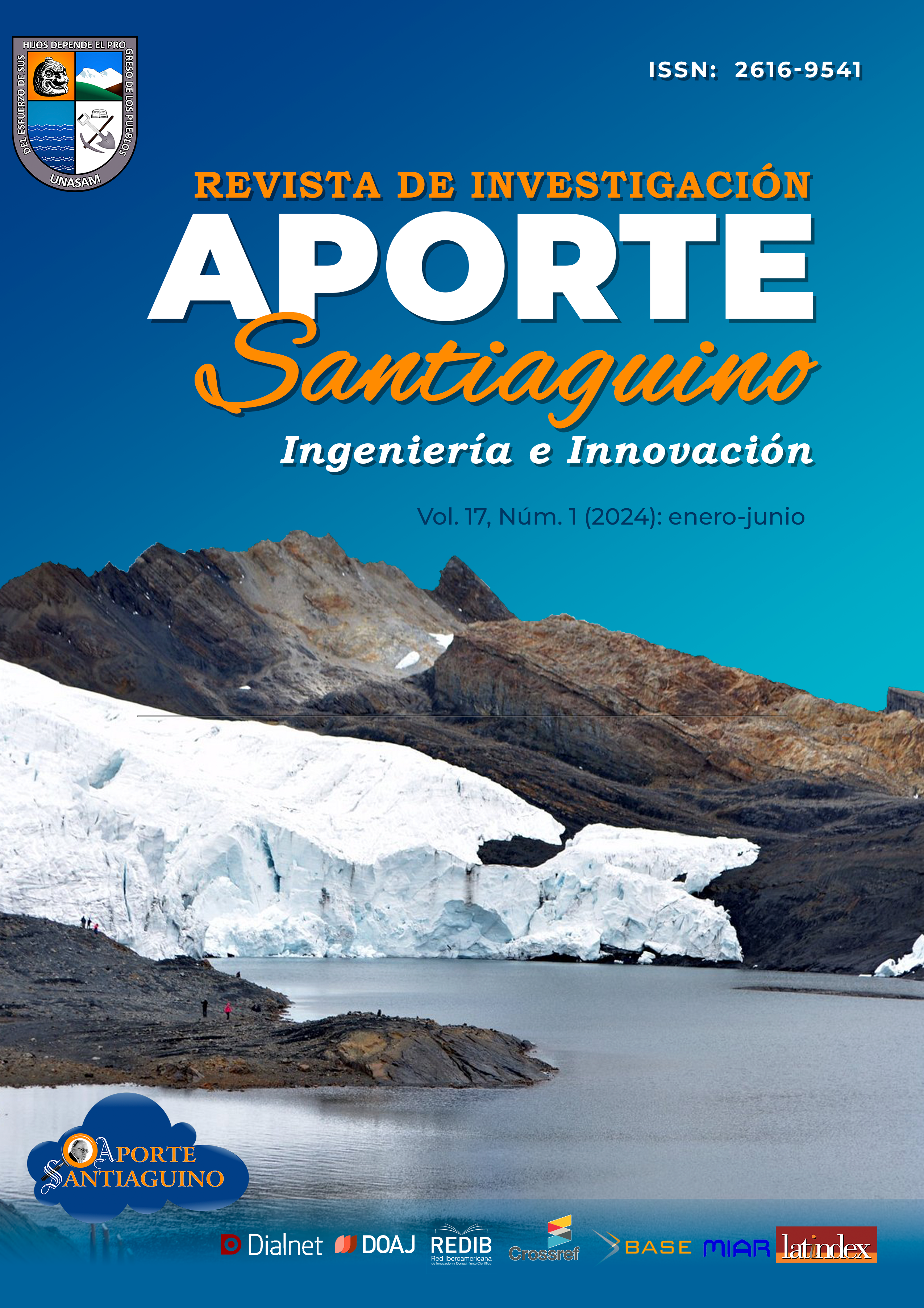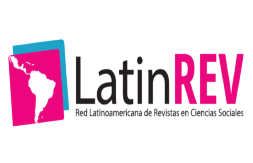Análisis comparativo de la evapotranspiración de referencia con métodos empíricos en la cuenca del rio Mosna
DOI:
https://doi.org/10.32911/as.2024.v17.n1.1132Palabras clave:
Recurso hídrico; evapotranspiración de referencia; Penman-Monteith; Hargreaves-Samani y río Mosna.Resumen
La estimación precisa de la evapotranspiración de referencia (ETo) es un factor fundamental para la planificación y gestión del recurso hídrico. El método recomendado por la FAO de Penman-Monteith es globalmente aceptado como el método estándar para el cálculo de la ETo. Sin embargo, este método requiere diversos parámetros meteorológicos que generalmente no se encuentran en las estaciones meteorológicas. En ese contexto, el objetivo de esta investigación fue evaluar el desempeño de tres métodos empíricos con respeto al método de referencia en la cuenca del río Mosna. Se utilizó los datos diarios proporcionados por el SENAMHI y NASA POWER. Los métodos empíricos de Hargreaves-Samani, Thornthwaite y Turc subestimaron la ETo en un 1,2 %, 56 % y 45 % en comparación con Penman-Monteith. Solamente el método de Hargreaves-Samani mostró un buen desempeño de la ETo con respeto a Penman-Monteith, evaluado mediante los estadísticos de prueba de R2 de 0,86, EPCM de 0,006, RECM de 0,080 y NSE de 0,975. Por lo tanto, el método de Hargreaves-Samani, que requiere únicamente como dato de entrada la temperatura, puede ser utilizado en esta cuenca
Descargas
Citas
Allen, R. G.; Pereira, L. S.; Raes, D. y Smith, M. (1998). Crop evapotranspiration: Guidelines for computing crop water requirements (FAO Irrigation and drainage paper 56.). Food and Agricultural Orgainzation of the United Nations. http://www.fao.org/docrep/x0490e/x0490e00.htm
ANA. (2015). Estudio de balance hídrico de la cuenca del río Mosna. Autoridad Nacional del Agua. https://repositorio.ana.gob.pe/handle/20.500.12543/2493
Boretti, A. y Rosa, L. (2019). Reassessing the projections of the World Water Development Report. Npj Clean Water, 2(1). https://doi.org/10.1038/s41545-019-0039-9
Donohue, R. J.; McVicar, T. R. y Roderick, M. L. (2010). Assessing the ability of potential evaporation formulations to capture the dynamics in evaporative demand within a changing climate. Journal of Hydrology, 386(1), 186-197. https://doi.org/10.1016/j.jhydrol.2010.03.020
Feng, Y.; Cui, N.; Zhao, L.; Gong, D. y Zhang, K. (2017). Spatiotemporal variation of reference evapotranspiration during 1954-2013 in Southwest China. Quaternary International, 441, 11. https://doi.org/10.1016/j.quaint.2017.01.023
Hargreaves, G. H. y Samani, Z. A. (1985). Reference Crop Evapotranspiration from Temperature. Applied Engineering in Agriculture, 1(2), 96-99. https://doi.org/10.13031/2013.26773
Islam, A. T.; Shen, S.; Yang, S.; Hu, Z. y Chu, R. (2019). Assessing recent impacts of climate change on design water requirement of Boro rice season in Bangladesh. Theoretical and Applied Climatology, 138, 97-113. https://doi.org/10.1007/s00704-019-02818-8
Li, M.; Chu, R.; Shen, S. y Islam, A. R. M. T. (2018). Quantifying Climatic Impact on Reference Evapotranspiration Trends in the Huai River Basin of Eastern China. Water, 10(2). https://doi.org/10.3390/w10020144
Lozoya, C.; Mendoza, C.; Mejía, L.; Quintana, J.; Mendoza, G.; Bustillos, M.; Arras, O. y Solís, L. (2014). Model Predictive Control for Closed-Loop Irrigation. IFAC Proceedings Volumes, 47(3), 4429-4434. https://doi.org/10.3182/20140824-6-ZA-1003.02067
Moriasi, D. N.; Arnold, J. G.; Van Liew, M. W.; Bingner, R. L.; Harmel, R. D. y Veith, T. L. (2007). Model Evaluation Guidelines for Systematic Quantification of Accuracy in Watershed Simulations. Transactions of the ASABE, 50(3), 885-900. https://doi.org/10.13031/2013.23153
Müller Schmied, H.; Adam, L.; Eisner, S.; Fink, G.; Flörke, M.; Kim, H.; Oki, T.; Portmann, F. T.; Reinecke, R.; Riedel, C.; Song, Q.; Zhang, J. y Döll, P. (2016). Variations of global and continental water balance components as impacted by climate forcing uncertainty and human water use. Hydrology and Earth System Sciences, 20(7), 2877-2898. https://doi.org/10.5194/hess-20-2877-2016
Pandey, P. K.; Dabral, P. P. y Pandey, V. (2016). Evaluation of reference evapotranspiration methods for the northeastern region of India. International Soil and Water Conservation Research, 4(1), 52-63. https://doi.org/10.1016/j.iswcr.2016.02.003
Pour, S. H.; Wahab, A. K. A.; Shahid, S. y Ismail, Z. B. (2020). Changes in reference evapotranspiration and its driving factors in peninsular Malaysia. Atmospheric Research, 246, 105096. https://doi.org/10.1016/j.atmosres.2020.105096
Raziei, T. y Pereira, L. S. (2013). Estimation of ETo with Hargreaves–Samani and FAO-PM temperature methods for a wide range of climates in Iran. Agricultural Water Management, 121, 1-18. https://doi.org/10.1016/j.agwat.2012.12.019
Ruiz Alvarez, O.; Singh, V.; Enciso, J.; Ontiveros-Capurata, R. E. y Santos, C. (2020). Observed trends in daily temperature extreme indices in Aguascalientes, México. Theoretical and Applied Climatology, 142. https://doi.org/10.1007/s00704-020-03391-1
Salam, R.; Islam, A. R. M. T.; Pham, Q. B.; Dehghani, M.; Al-Ansari, N. y Linh, N. T. T. (2020). The optimal alternative for quantifying reference evapotranspiration in climatic sub-regions of Bangladesh. Scientific Reports, 10(1), 20171. https://doi.org/10.1038/s41598-020-77183-y
Santos, M. S. N. D.; Castro, I. A. D.; Oro, C. E. D.; Zabot, G. L. y Tres, M. V. (2021). Reference crop evapotranspiration in distinct agricultural regions of Southern Brazil: A comparison of improved empirical models. Revista Engenharia na Agricultura - REVENG, 29. https://doi.org/10.13083/reveng.v29i1.12418
Da Silva, G. H.; Dias, S. H. B.; Ferreira, L. B.; Santos, J. É. O. y Da Cunha, F. F. (2018). Performance of different methods for reference evapotranspiration estimation in Jaíba, Brazil. Revista Brasileira de Engenharia Agrícola e Ambiental, 22, 83-89. https://doi.org/10.1590/1807-1929/agriambi.v22n2p83-89
Song, X.; Lu, F.; Xiao, W.; Zhu, K.; Zhou, Y. y Xie, Z. (2018). Performance of twelve reference evapotranspiration estimation methods to Penman-Monteith method and the potential influences in northeast China. Meteorological Applications, 26. https://doi.org/10.1002/met.1739
Thornthwaite, C. W. (1948). An Approach toward a Rational Classification of Climate. Geographical Review, 38(1), 55-94. https://doi.org/10.2307/210739
Turc, L. (1961). Évaluation des besoins en eau d’irrigation, evapotranspiration potentielle. Formule climatique simplif iée et mise à jour. Annuaire Agronomie, 12(1), 13-49.
Venancio, L. P.; Cunha, F. F.; Mantovani, E. C.; Sediyama, G. C.; Eugenio, F. C. y Aleman, C. C. (2019). Penman-Monteith with missing data and Hargreaves-Samani for ETo estimation in Espírito Santo state, Brazil. Revista Brasileira de Engenharia Agrícola e Ambiental, 23, 153-159. https://doi.org/10.1590/1807-1929/agriambi.v23n3p153-159
Villa, A. O.; Ontiveros, R. E.; Ruiz, O.; González, A.; Quevedo, A. y Ordóñez, L. M. (2021). Variación espacio-temporal de la evapotranspiración de referencia a partir de métodos empíricos en Chihuahua, México. Ingeniería Agrícola y Biosistemas (e2007-4026), vol. 13, no. 1. http://repositorio.imta.mx/handle/20.500.12013/2258
Zhao, L.; Zhao, X.; Zhou, H.; Wang, X. y Xing, X. (2021). Prediction model for daily reference crop evapotranspiration based on hybrid algorithm and principal components analysis in Southwest China. Computers and Electronics in Agriculture, 190, 106424. https://doi.org/10.1016/j.compag.2021.106424
Descargas
Publicado
Cómo citar
Número
Sección
Licencia
Derechos de autor 2024 Adan Alcides Acevedo, Esteban Reyes Roque

Esta obra está bajo una licencia internacional Creative Commons Atribución 4.0.





















